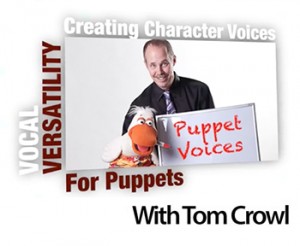The final clip of our six part interview with magician, ventriloquist and figure builder Mike Palma. If you haven’t checked out his web site, you can find it at: http://ventriloquistworkshop.com/ (Website no longer active.)
Video Transcript:
My show is magic and ventriloquism, and I think one of the most important parts of doing a show is audience participation.
Whether it’s a magic trick or a figure interacting with the audience, involving people makes a huge difference. I learned this from a couple of people, and the first was Michael Ammar, who is a fantastic close-up magician. He always said: make the magic memorable.
If you see David Copperfield make the Statue of Liberty disappear, everyone talks about it. Now, most of us aren’t doing shows big enough to make the Statue of Liberty vanish, but we still need to do something that makes people remember us.
In close-up magic, if you put something in their hand—like a sponge ball—and it disappears, that moment becomes unforgettable. You’ve brought them into the show. The same thing applies to ventriloquism or any performance art: make the audience part of the show, and they’ll remember you much longer.
So, if there’s one big tip I can give for either magic or ventriloquism, it’s this: use your audience. They want to be involved, and it makes the experience stick.
I watch a lot of videos, including the interviews you’ve done, and every time I think, man, there are so many things you can learn from this. Even if you’ve been performing since childhood and you’re 100 years old, you can still pick up new things.
Last year at the convention, I learned a lot from Sammy King. One of the big things he taught was about body language. He told me: watch your act with the volume turned off. Just watch what you’re doing physically. That advice made a huge difference for me and how I perform.
I’d never thought of doing that before. I used to just cover up the puppet and watch myself, or cover myself and just watch the puppet. But watching the whole act with the sound off really makes you more aware of your body language. Like, are your eyes doing something different than what the dummy is supposed to be doing? It helps line things up.
Sammy’s a super guy. Sweet guy. Love him.
One thing he told me last year really stuck with me. He said: it is our responsibility as performers to give back to the vent community.
If you see someone older just starting out—or a younger person who’s new and needs help—you should help them. We’ve got to keep this art alive. We’ve got to nurture new performers and give them guidance. Someone helped us along the way, and it’s our responsibility to do the same.
That really hit home.
And it reminds me of Clinton Detweiler. He gave and gave and gave. If you had a question, you could call him, and he’d happily answer. If you wrote to him, he’d always write back. Another mentor of mine was Bill Boley. Same thing—selfless, always giving back to the vent community. I’ll be forever grateful to both of those men.
Learn more about how to build your own ventriloquist dummy! Take Mike’s course by clicking the image below:
Next Article: An Interview With David Pendleton
Previous Article: An Interview With Ventriloquist Mike Palma – Part 5
Start of Interview: An Interview With Ventriloquist Mike Palma – Part 1







